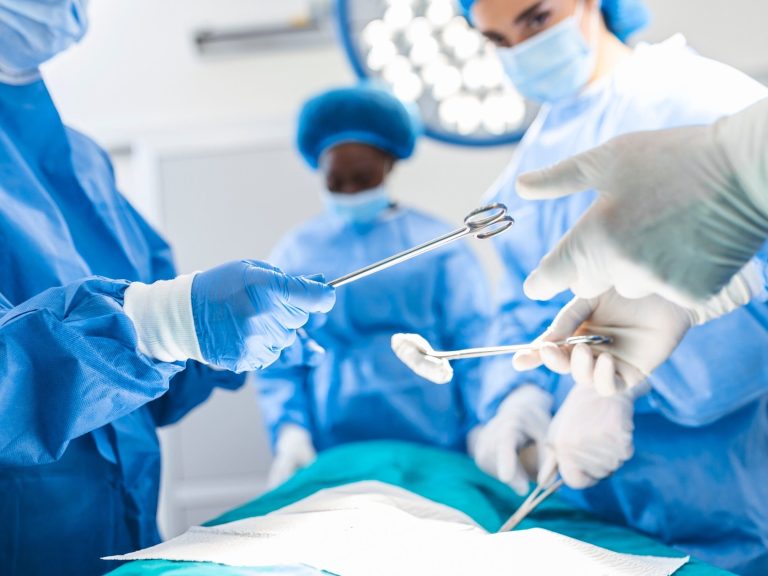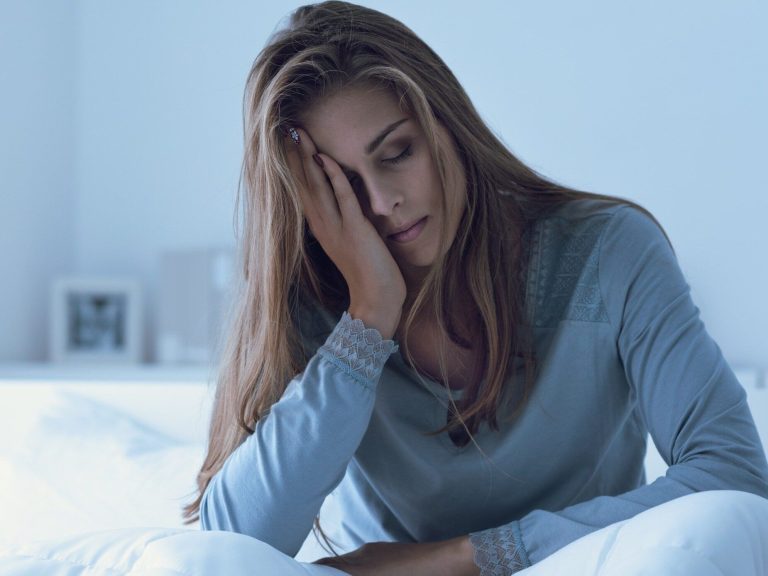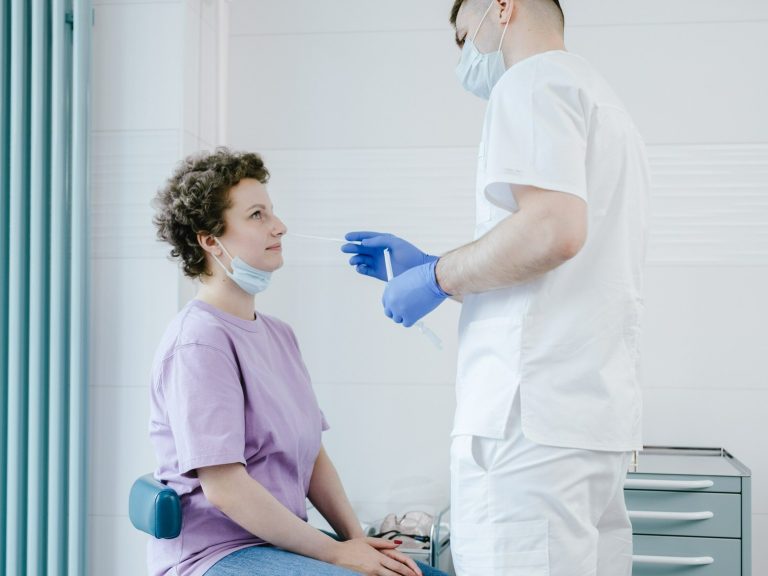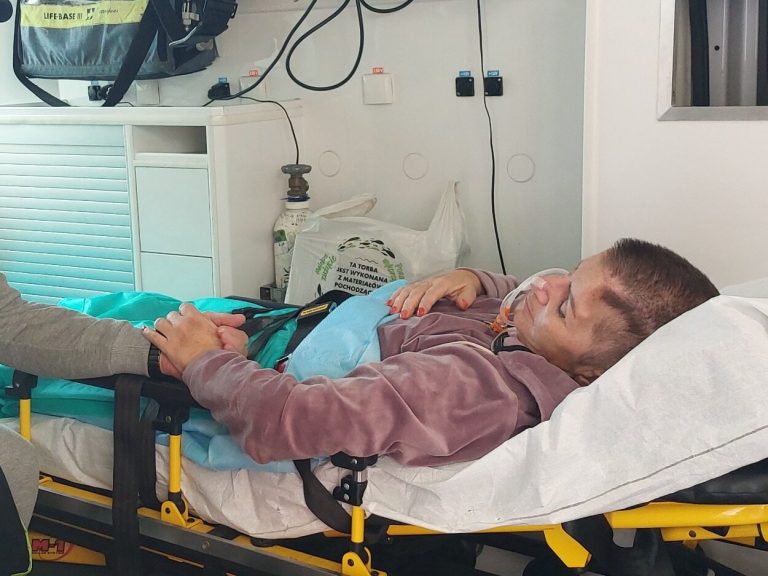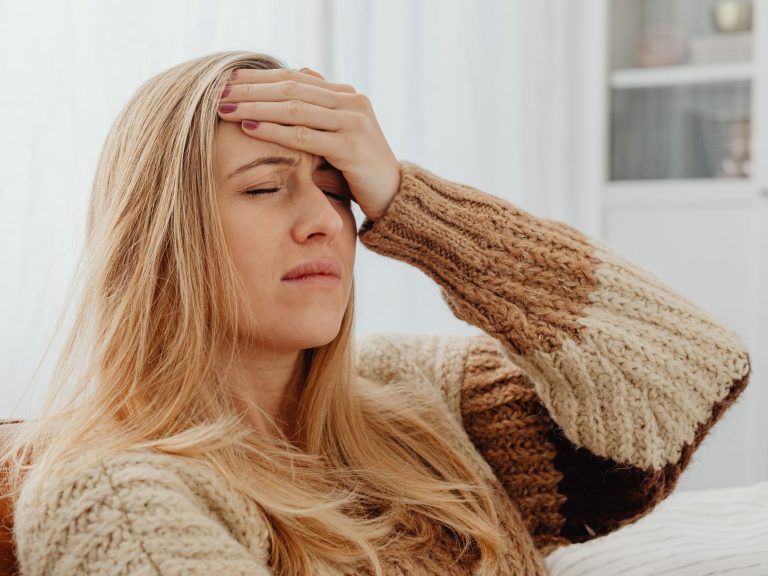Knee pain – the most common causes, accompanying symptoms, diagnosis and treatment
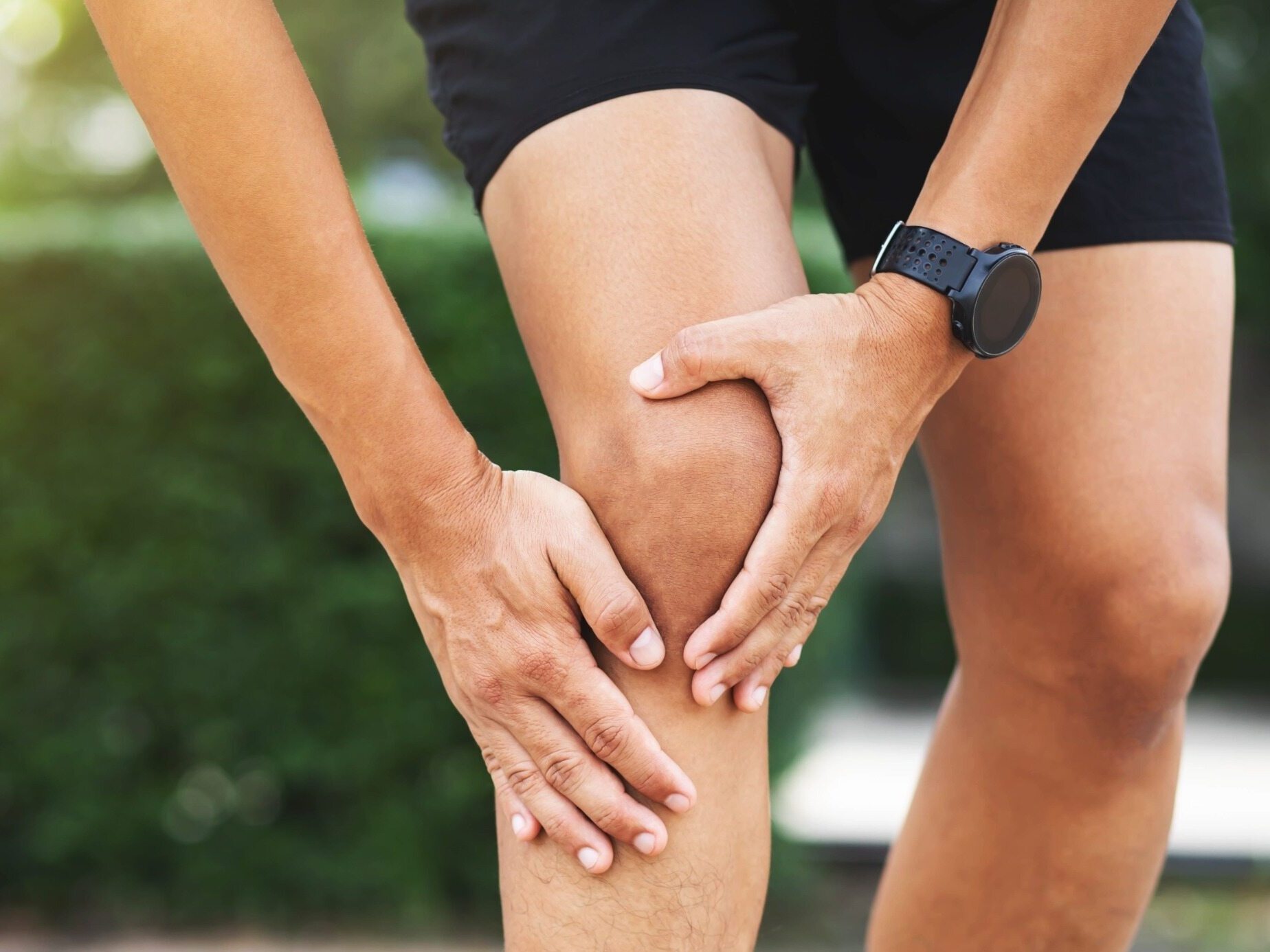
Knee pain is a common ailment that makes it difficult for people of all ages to function normally. Knee pain can be associated with, for example, excessive body weight, overload with physical effort, as well as a degenerative process. What are the most common causes of knee pain? What home remedies for knee pain should be used and when should you go to the doctor immediately? We explain.
- How is the knee joint built?
- Functions of the knee joint
- Knee pain and osteoarthritis
- Who is most affected by knee pain?
- Common causes of knee pain
- What knee diseases and injuries cause pain in the front of the knee?
- What knee diseases and injuries cause pain in the lateral part of the knee?
- Knee pain diagnosis
- Treatment of knee/knee pain
- Knee pain home remedies
Knee pain bothers not only seniors, whose pain in the joints is often associated with the natural aging processes of the body. It is worth learning more about the structure of the knee joint, risk factors for the development of its diseases, home remedies to reduce knee pain, as well as treatment methods that allow you to improve the quality of life and get rid of the ailments limiting your efficiency.
How is the knee joint built?
The knee joint is the largest joint in the human body. This is the so-called hinge joint, which is located at the ends of the femur and tibia. In the construction of the knee joint, we distinguish: the tibia-femoral joint and the patellofemoral joint (patella).
The ligaments are responsible for the proper stabilization of the knee joint, e.g. anterior and posterior cruciate ligaments, collateral ligaments, and the patellar ligament proper. In the anatomy of the knee, we also distinguish the articular meniscus, joint capsule, joint bursa, as well as muscles and tendons.
Functions of the knee joint
The knee joint is not only the largest, but also one of the most complex in terms of joint structure, which makes it very susceptible to injuries as well as degenerative processes. The knee joint has many important functions. Thanks to it, we can not only bend the lower limb; knee joint provides adequate cushioning and reduction of excessive pressure, e.g. on feet.
Knee pain and osteoarthritis
Sudden knee pain is often associated with injuries and injuries. Chronic knee pain may indicate a progressive degenerative process. Osteoarthritis affects women more often.
Factors that increase the risk of its development include: overweight and obesity, hormonal changes, as well as a lifestyle that favors excessive strain on the joints, e.g. standing work. Osteoarthritis usually causes knee pain or knee pain in people over 50, but sometimes the symptoms associated with degenerative changes appear earlier.
Osteoarthritis causes disorders in the quantity and quality of articular cartilage, which is responsible for cushioning the movements of the knee joint and allowing the articular surfaces to slide relative to each other. The characteristic symptoms of knee osteoarthritis are pain in the area of the kneecap (pain in the front of the knee) as well as problems with bending and straightening the knee.
Knee pain should prompt you to see a doctor. Ignoring the pain and other symptoms of the knee joint – swelling, redness of the skin and its warming, joint stiffness, joint instability – can lead to the aggravation of a chronic disease or injury, hindering not only normal functioning, but also treatment. Ailments associated with osteoarthritis can also occur in young people, e.g. people professionally and amateurly practicing sports and people with obesity.
Who is most affected by knee pain?
Knee joint pain is more common in people who are overweight and obese, people who work in a standing, sitting and kneeling position, as well as people practicing sports who often have pain indicating a runner’s knee or a moviegoer’s knee.
In the case of knee pain, both a sedentary and an active lifestyle have a negative impact on the knee joint.
Risk factors for chronic knee pain include:
-
overweight and obesity at every stage of life – extra kilos increase the risk of knee pain not only in middle-aged and elderly people, but also in children, adolescents and young adults;
-
improperly composed diet and intake of too little fluid – the health of the joints is affected by the supply of nutrients, as well as adequate hydration of the body;
-
genetic load;
-
posture defects and defects in the anatomical structure of the knee joints;
-
lifestyle, level of physical activity and type of work performed – people who spend a lot of time in a sitting and standing position, people who work in forced positions, e.g.
Knee pain varies in severity. Acute knee pain that comes on suddenly is most often related to an injury. The risk of injury in the area of the knee joint increases, among others: mistakes made during exercise, overloading the knees during activity and the use of incorrectly selected footwear, e.g. while running.
Acute pain in the knee joint is also related to micro-injuries, which deepen over the years, leading to degenerative changes in the knee area and gradually limiting efficiency. By underestimating ailments that are mild and do not limit fitness, we increase the risk of the disease getting worse.
One of the characteristic alarm signals that indicate that chronic knee pain may start to bother us is problems with climbing stairs. It causes them, among others limited mobility of the knee joint. Knee pain can also be related to wearing ill-fitting shoes and frequent high-heeled shoes. The risk of pain in the knee joint increases the history of knee injuries.
Knee pain also differs in terms of the type of pain experienced. There may be pain in the knees that varies in intensity and is sharp, stabbing, stabbing, burning or aching. Elderly people often experience sudden knee pain, which is associated with changes in the weather.
Common causes of knee pain
Knee pain may indicate not only osteoarthritis and related cartilage damage, but also other musculoskeletal disorders and knee joint injuries, e.g.:
-
bursitis of the knee joint,
-
sprain of the knee joint,
-
rheumatoid arthritis,
-
iliotibial band syndrome (runner’s knee),
-
patellofemoral syndrome (patellofemoral arthritis, kinoman’s knee),
-
patellar tendonitis (jumper’s knee),
-
patellar luxation,
-
patellar fracture,
-
rupture of the anterior cruciate ligament.
Knee injuries are most often associated with physical activity, e.g. running, cycling, skiing and practicing exercise and body sports, but they can also occur during ordinary everyday activities, e.g. when falling down the stairs, slipping on a wet floor or sudden kneeling after prolonged sitting, e.g. while driving a car. Knee pain or knee pain can also be caused by, for example, gout and sciatica.
Important! Pain in the lower limbs, e.g. around the knee, may indicate not only orthopedic diseases or knee injuries, but also circulatory disorders. If there is pain and clear swelling not only in the knee joint, but also in the area of the thigh or lower leg, and the skin is red and warm, deep vein thrombosis may develop. Deep vein thrombosis is a serious disease that requires immediate specialist treatment. In the case of thrombosis, the pain is often located in the popliteal fossa.
What knee diseases and injuries cause pain in the front of the knee?
Pain in the front of the knee, such as kneecap pain, can have various causes. It is caused by both overloading the knees and inflammation within the structures of the knee joint. In the case of pain in the front of the knee, there may also be swelling of the knee joint, redness of the skin and limited mobility that occurs when bending and straightening the knee.
Pain in the front of the knee can also be associated with osteoarthritis, rheumatoid arthritis and other autoimmune diseases, knee bursitis, patellar tendonitis, as well as patellofemoral arthritis and tendinitis. Pain in the front of the knee is often worse with movement and partially or completely relieved at rest.
What knee diseases and injuries cause pain in the lateral part of the knee?
Pain on the side of the knee can also have various causes. Most often it is related to injuries, e.g. knee contusion, but it can also indicate knee degeneration, meniscus diseases, patella diseases and inflammation caused by tearing tendons, ligaments or muscles. If the knee pain is accompanied by instability of the knee joint and the knee cannot be bent, these complaints indicate a rupture of the cruciate ligament.
It is often difficult to determine exactly where the knee hurts, so the diagnosis of knee pain is based not only on the history and physical examination. Imaging tests play an important role at the stage of diagnosis and monitoring the effects of knee pain treatment. Thanks to imaging tests, damaged or inflamed structures of the knee joint can be precisely located and effective treatment can be initiated.
Knee pain diagnosis
The following imaging tests may be performed as part of the diagnosis of knee pain or knee pain:
-
x-ray examination,
-
magnetic resonance imaging,
-
ultrasound of the knee joint,
-
computed tomography.
The most common examinations performed in patients reporting knee pain are X-ray, magnetic resonance imaging and ultrasound examination of the knee joint. In some cases, other tests are also performed, e.g. exploratory arthroscopy.
Treatment of knee/knee pain
In the case of knee pain, both conservative and surgical treatment is used. During conservative treatment, patients take non-steroidal anti-inflammatory drugs and analgesics. The drugs are used orally and topically in the form of ointments or injections. Pharmacological treatment is complemented by physiotherapy and rehabilitation. Patients with knee pain should reduce excessive body weight and perform exercises recommended by a specialist.
Surgical treatment is used when conservative treatment is ineffective or impossible due to the degree of damage to the structures of the knee joint. Currently, most patients undergo minimally invasive procedures, thanks to which the risk of postoperative complications is reduced and the convalescence period is shortened.
Knee pain home remedies
Home remedies for injuries and conditions that can cause knee pain are no substitute for specialist treatment. On an ad hoc basis, you can use cold compresses, over-the-counter ointments, compresses made of cabbage leaves and analgesic and anti-inflammatory amber tincture.
Sources:
Bochenek A., Reicher M., Human Anatomy, Wydawnictwo Lekarskie PZWL, Warsaw, 2016.
M. Corr, Pain in rheumatic diseases, Wydawnictwo Edra Urban & Partner, Wrocław, 2023.
D. Kusz, Compendium of orthopedics, Wydawnictwo Lekarskie PZWL, Warsaw, 2015.
Szczeklik A., Internal diseases, Volume II, Wydawnictwo Medycyna Praktyczna, Krakow, 2006.


